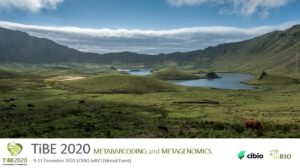SCREENING FRESHWATER MACROINVERTEBRATE COMMUNITIES USING A MULTI-MARKER METABARCODING APPROACH
SCREENING FRESHWATER MACROINVERTEBRATE COMMUNITIES USING A MULTI-MARKER METABARCODING APPROACH
Filipa MS Martins (CIBIO-InBIO/UP) | July 5, 2019 | 15h30 | CIBIO-InBIO’s Auditorium, Campus de Vairão, Portugal
DNA metabarcoding has proven to be a relevant technique in the assessment of benthic macroinvertebrates communities, providing higher taxonomic coverage and resolution than traditional methods. However, there is still a lack of knowledge on the effect of different protocols on the ecological inferences made from these techniques. Here, we analyse the impact of using different markers on the estimation of diversity and composition of macroinvertebrates communities and their relationship with environmental conditions. For this end, we examined ethanol samples collected from 80 river sites at central Portugal using three markers from distinct genomic regions: mitochondrial cytochrome oxidase I gene (313bp) and 16S rRNA gene (~150bp), and nuclear 18S rRNA gene (~130bp). Preliminary results reveal that combining multiple markers improves taxonomic coverage by detecting a wider range of freshwater taxonomic groups. Yet, although the three markers reflect different communities in terms of diversity and structure, they recover similar environmental signals separately and combined. Overall, the use of a multi-marker approach provides additional biodiversity information on these highly diverse and complex communities than single markers, improving our capacity to fully monitor freshwater ecosystems using molecular techniques.







